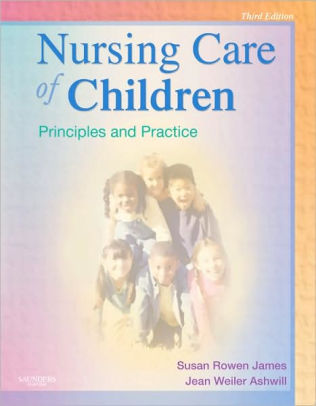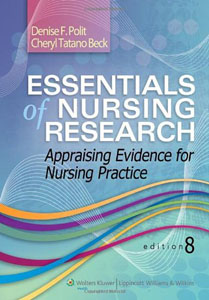Test Bank For Nursing Care of Children Principles and Practice 3rd edition by Susan R. James
Original price was: $75.00.$34.00Current price is: $34.00.
Test Bank For Nursing Care of Children Principles and Practice 3rd edition by Susan R. James is an invaluable resource for nurses caring for children. The book provides a comprehensive overview of the principles of pediatric nursing, with a focus on evidence-based practice. In addition, the book includes a wealth of practical information on assessment, diagnosis, and interventions for common childhood conditions.
The Test Bank For Nursing Care of Children Principles and Practice 3rd edition by Susan R. James is an essential reference for any nurse who cares for children.
Digital item No Waiting Time Instant Download
ISBN-10: 1416030840 ISBN-13: 9781416030843
Description
Test Bank For Nursing Care of Children Principles and Practice 3rd edition by Susan R. James
James: Nursing Care of Children: Principles and Practice, 3rd Edition
Test Bank
Chapter 03: Communicating with Children
MULTIPLE CHOICE
1. Which of the following information would the nurse include when preparing a 5-year-old child for a cardiac catheterization?
a.
A detailed explanation of the procedure
b.
A description of what the child will feel and see during procedure
c.
An explanation about the dye that will go directly into his vein
d.
An assurance to the child that he and the nurse can talk about the procedure when it is over
ANS: B
Feedback
A
Explaining the procedure in detail is probably more than the 5-year-old child can comprehend and it will produce anxiety.
B
For a preschooler, the provision of sensory information about what to expect during the procedure will enhance the child’s ability to cope with the events of the procedure and will decrease anxiety.
C
Using the word “dye” with a preschooler can be frightening for the child.
D
The child needs information before the procedure.
DIF:Cognitive Level: ApplicationREF:Text Reference: pg 59
OBJ:Nursing Process Step: Planning
MSC: NCLEX: Health Promotion and Maintenance
2.Who are the “experts” in planning for the care of a 9-year-old child with a profound sensory impairment who is hospitalized for surgery?
a.
The child’s parents
b.
The child’s teacher
c.
The case manager
d.
The primary nurse
ANS: A
Feedback
A
The parents, as primary caregivers, can identify the child’s needs to help develop an effective, individualized plan of care.
B
The child’s teacher is not as “expert” as her parents for planning her care.
C
The case manager is not as aware as the parents are of the child’s individual needs.
D
The primary nurse would use the child’s parents as resources in planning the best approach to the child’s care.
DIF:Cognitive Level: ComprehensionREF:Text Reference: pg 60
OBJ: Nursing Process Step: Planning MSC: NCLEX: Psychosocial Integrity
3.Which of the following is an effective technique for communicating with toddlers?
a.
Have the toddler make up a story from a picture.
b.
Involve the toddler in dramatic play with dress-up clothing.
c.
Repeatedly read familiar stories to the child.
d.
Ask the toddler to draw pictures of his fears.
ANS: C
Feedback
A
Most toddlers do not have the vocabulary to make up stories.
B
Dramatic play is associated with older children.
C
Ritualism is a characteristic of the toddler period. By repeating familiar stories and other rituals, the toddler feels a sense of control, which facilitates communication.
D
Toddlers probably are not capable of drawing or verbally articulating their fears.
DIF:Cognitive Level: ApplicationREF:Text Reference: pg 55
OBJ:Nursing Process Step: Planning
MSC: NCLEX: Health Promotion and Maintenance
4.What is the most important consideration for effectively communicating with a child?
a.
The child’s chronologic age
b.
The parent-child interaction
c.
The child’s receptiveness
d.
The child’s developmental level
ANS: D
Feedback
A
The child’s age may not correspond with the developmental level; therefore, it is not the most important consideration for communicating with children.
B
Parent-child interaction is useful in planning communication with children, but it is not the primary factor in establishing effective communication.
C
The child’s receptiveness is a consideration in evaluating the effectiveness of communication.
D
The child’s developmental level is the basis for selecting the terminology and structure of the message most likely to be understood by the child.
DIF:Cognitive Level: ComprehensionREF:Text Reference: pg 54
OBJ:Nursing Process Step: Assessment
MSC: NCLEX: Health Promotion and Maintenance
5.Which of the following behaviors is most likely to encourage open communication?
a.
Avoiding eye contact
b.
Folding arms across chest
c.
Standing with head bowed
d.
Soft stance with arms loose at the side
ANS: D
Feedback
A
Avoiding eye contact does not facilitate communication.
B
Folding arms across the chest is a closed-body posture, which does not facilitate communication.
C
Standing with head bowed is a closed-body posture, which does not facilitate communication.
D
A swaying body with arms loose at the sides suggests openness.
DIF:Cognitive Level: ComprehensionREF:Text Reference: pg 50
OBJ:Nursing Process Step: Implementation
MSC: NCLEX: Psychosocial Integrity
6.Which of the following strategies is most likely to encourage a child to express his feelings about the hospital experience?
a.
Avoiding periods of silence
b.
Asking direct questions
c.
Sharing personal experiences
d.
Using open-ended questions
ANS: D
Feedback
A
Periods of silence can serve to facilitate communication.
B
Direct questions can threaten and block communication.
C
Talking about yourself shifts the focus of the conversation away from the child.
D
Open-ended questions encourage conversation.
DIF:Cognitive Level: ApplicationREF:Text Reference: pg 50
OBJ: Nursing Process Step: Planning MSC: NCLEX: Psychosocial Integrity
7.Which of the following is the most appropriate question to ask when interviewing an adolescent to encourage conversation?
a.
“Are you in school?”
b.
“Are you doing well in school?”
c.
“How is school going for you?”
d.
“How do your parents feel about your grades?”
ANS: C
Feedback
A
Direct questions with “yes” or “no” answers do not encourage conversation.
B
Direct questions that can be interpreted as judgmental do not enhance communication.
C
Open-ended questions encourage communication.
D
Asking adolescents about their parents’ feelings may block communication.
DIF:Cognitive Level: ApplicationREF:Text Reference: pg 50
OBJ:Nursing Process Step: Implementation
MSC: NCLEX: Psychosocial Integrity
8.What is the most appropriate response for the nurse to make to the parent of a 3-year-old child found in a bed with the side rails down?
a.
“You must never leave the child in the room alone with the side rails down.”
b.
“I am very concerned about your child’s safety when you leave the side rails down. The hospital has guidelines stating that side rails need to be up if the child is in the bed.”
c.
“It is hospital policy that side rails need to be up if the child is in bed.”
d.
“When parents leave side rails down, they might be considered as uncaring.”
ANS: B
Feedback
A
Framing the communication in the negative does not facilitate effective communication.
B
To express concern and then choose words that convey a policy is appropriate.
C
Stating a policy to parents conveys the attitude that the hospital has authority over parents in matters concerning their children and may be perceived negatively.
D
This statement conveys blame and judgment to the parent.
DIF:Cognitive Level: ApplicationREF:Text Reference: pg 52
OBJ:Nursing Process Step: Implementation
MSC: NCLEX: Psychosocial Integrity
9.Which of the following is an appropriate preoperative teaching plan for a school-age child?
a.
Begin preoperative teaching the morning of surgery.
b.
Schedule a tour of the hospital a few weeks before surgery.
c.
Show the child books and pictures 4 days before surgery.
d.
Limit teaching to 5 minutes and use simple terminology.
ANS: C
Feedback
A
Preoperative teaching a few hours before surgery is more appropriate for the preschool child.
B
Preparation too far in advance of the procedure can be forgotten or cause undue anxiety for an extended period of time.
C
Preparatory material can be introduced to the school-age child several days (1-5) in advance of the event. Books, pictures, charts, and videos are appropriate.
D
A very short, simple explanation of the surgery is appropriate for a younger child such as a toddler.
DIF: Cognitive Level: Comprehension REF: Text Reference: pgs 55-56
OBJ:Nursing Process Step: Planning
MSC: NCLEX: Health Promotion and Maintenance
10.When a child broke her favorite doll during a hospitalization, her primary nurse bought the child a new doll and gave it to her the next day. What is the best interpretation of the nurse’s behavior?
a.
The nurse is displaying signs of overinvolvement.
b.
The nurse is a kind and generous person.
c.
The nurse feels a special closeness to the child.
d.
The nurse wants to make the child happy.
ANS: A
Feedback
A
Buying gifts for individual children is a warning sign of overinvolvement.
B
Nurses are kind and generous people, but buying gifts for individual children is unprofessional.
C
Nurses may feel closer to some clients and families. This does not make giving gifts to children or families acceptable from a professional standpoint.
D
It is not the nurse’s responsibility to replace lost items. Becoming overly involved with a child can inhibit a healthy relationship.
DIF:Cognitive Level: AnalysisREF:Text Reference: pg 53
OBJ: Nursing Process Step: Assessment MSC: NCLEX: Psychosocial Integrity
11.When meeting a toddler for the first time, the nurse initiates contact by:
a.
calling the toddler by name and picking the toddler up.
b.
asking the toddler for her first name.
c.
kneeling in front of the toddler and speaking softly to the child.
d.
telling the toddler that you are her nurse.
ANS: C
Feedback
A
Picking a toddler up at an initial meeting is a threatening action and will more likely result in a negative response from the child.
B
Toddlers are unlikely to respond to direct questions at a first meeting.
C
More positive interactions occur when the toddler perceives the meeting in a nonthreatening way. Placing yourself at the toddler’s level and speaking softly can be less threatening for the child.
D
Telling the toddler you are the nurse is not likely to facilitate or encourage cooperation. The toddler perceives you as a stranger and will find the action threatening
DIF:Cognitive Level: ApplicationREF:Text Reference: pg 48
OBJ:Nursing Process Step: Implementation
MSC: NCLEX: Psychosocial Integrity





Be the first to review “Test Bank For Nursing Care of Children Principles and Practice 3rd edition by Susan R. James”